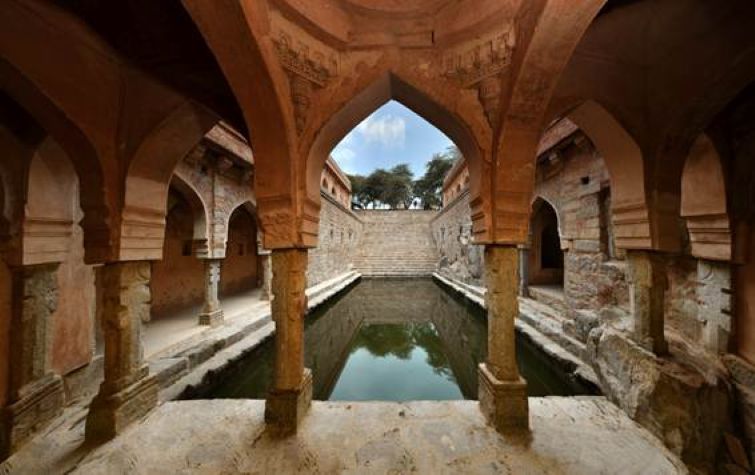Rajon ki Baoli renovated, open to public

Team L&M
The 16th – century stepwell, Rajon ki Baoli, located in Mehrauli Archaeological Park, New Delhi is now open to the public. Working towards protecting India’s cultural and environmental heritage, the Archaeological Survey of India (ASI), in collaboration with the World Monuments Fund India (WMFI) and the TCS Foundation, has now successfully completed its conservation work.
This project was a part of WMFI’s Historic Water Systems of India initiative, funded by the TCS Foundation, aligning with the World Monuments Fund’s Climate Heritage Initiative.
It highlights the importance of restoring traditional water systems as sustainable solutions for water management in the face of climate change.
The restoration work included cleaning, desilting, structural repair, and water quality improvements, using traditional materials and techniques.
The baoli was cleaned, desilted, and connected to proper drainage systems. Fish were introduced to help maintain water quality. Traditional materials like lime plaster and mortar were used to preserve the original character of the structure. The restoration was guided by historical records to retain the site’s Lodi-era authenticity.
In addition to the restoration, the ASI and its partners engaged local communities to promote awareness of the baoli’s cultural and ecological value. Educational programs and participatory conservation activities were designed to ensure the site’s long-term care.
Built around 1506 during the Lodi dynasty, Rajon ki Baoli stands as a testament to Lodhi-era architecture and traditional water engineering. This four-tiered stepwell was thoughtfully designed not only to store water but also to offer shade and rest to travellers. Its elegant arched colonnades, ornate stucco medallions with floral and geometric patterns, and finely carved stone elements reflect the artistic sophistication of the time. Spanning across the area of 1,610 square meters, this baoli descends to a depth of 13.4 meters, with the main tank measuring 23 by 10 meters at its base.

